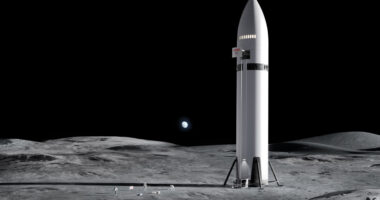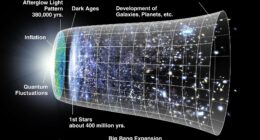Google researchers have unveiled a “moonshot” research initiative to build AI data centres in space, powered directly by the sun. The proposal — known as Project Suncatcher, despite its moonshot credentials — aims to address AI’s growing energy needs by harnessing computation directly from the solar system’s largest power source.
The system design involves fleets of satellites equipped with solar arrays and Google’s Tensor Processing Unit (TPU) accelerator chips. These satellite constellations would be launched into a dawn-dusk, sun-synchronous low-Earth orbit (LEO) to maximise power generation and minimise launch costs.
Instead of transmitting power back to Earth, the space-based ML “data centres” would network via free-space optical inter-satellite links (FSO ISLs). A key challenge is achieving the high-bandwidth, low-latency networking required for large-scale ML, which demands throughputs on the order of “hundreds of gigabits per second per chip”.
The paper’s analysis shows that an aggregate bandwidth of 10 Tbps per link is “achievable” by using Commercial Off-The-Shelf (COTS) optical technology. This would require the satellites to fly in close formation, “hundreds of kilometres or less apart”. A bench-scale demonstrator has already achieved 800 Gbps (1.6 Tbps bidirectional) transmission.
Networking in orbit
This focus on advanced laser-based networking in orbit is part of a growing trend. In related news, a University of Michigan-led project called ORACLE (Orbital Architectures for Cooperative Laser Energetics) aims to utilise existing laser interlinks to transfer not only data but also power and momentum between spacecraft. This could allow satellites to move without onboard fuel and transform constellations into interconnected systems.
“With the explosive growth of satellite constellations, we are now at a moment where expanding cooperation between satellites via laser links can create capabilities we’ve never seen before,” said Christopher Limbach, the U-M assistant professor leading the project. “By integrating data, power and momentum sharing into a single laser-based framework, ORACLE could transform constellations from collections of independent satellites into dynamic, interconnected systems.”
While the ORACLE project focuses on sharing resources, Google’s “moonshot” focuses on creating a new, scalable infrastructure. To manage its large, tightly-clustered satellite formations, the Google paper describes an 81-satellite cluster with a 1 km radius and proposes using high-precision, ML-based models for flight control.
The feasibility study also addressed two other critical factors:
- Radiation Tolerance: Google’s V6e Trillium Cloud TPUs were radiation tested. The TPUs survived a total ionising dose equivalent to a five-year mission life without permanent failures. The High Bandwidth Memory (HBM), the most sensitive component, only began to show irregularities after nearly three times the minimum requirement.
- Launch Costs: An analysis of SpaceX launch data suggests a ~20% learning rate, which, if sustained, could see launch prices to LEO fall to $200/kg by the mid-2030s. The paper calculates that at this price, the annualised cost per unit of power in space (~$810/kW/y) could be “roughly comparable” to terrestrial data centre energy costs ($570-$3,000/kW/y).
The authors describe these initial results as an “encouraging first step” toward a scalable solution that would minimise the impact on terrestrial resources like land and water.










